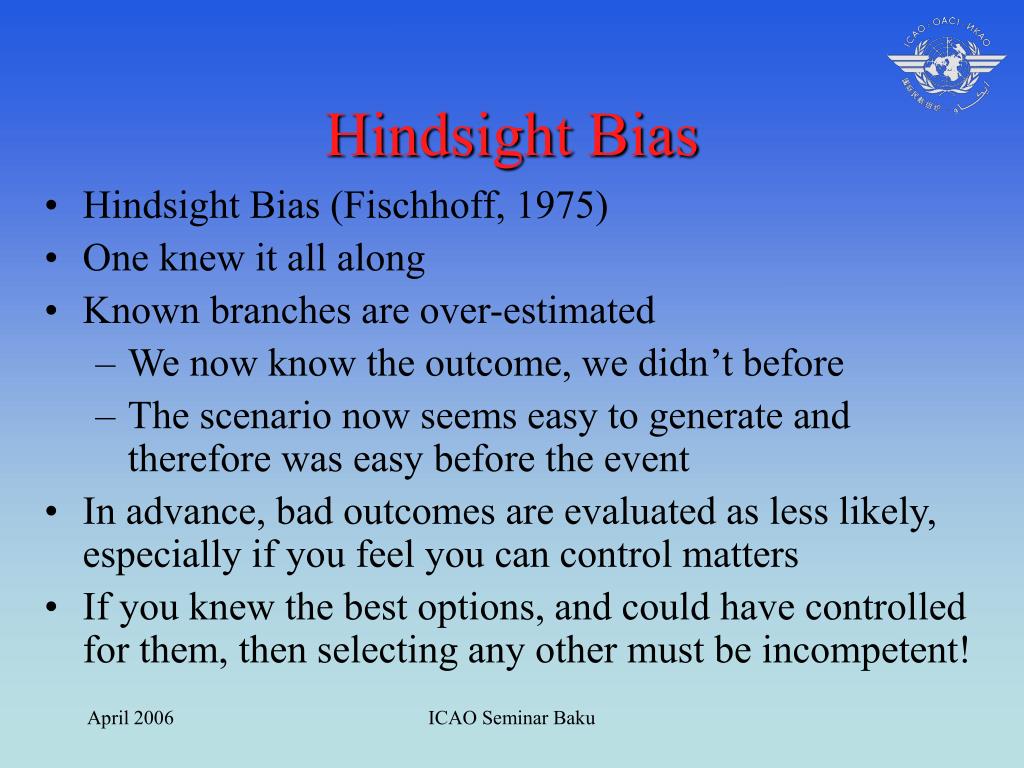
Even if something has led to a desirable outcome in the past, it doesn’t mean that those events will lead to successful outcomes in the future. The first step for challenging your hindsight bias is to accept the fact that you can’t predict the future. Here’s how you can effectively deal with hindsight bias: It’s impossible to completely eliminate hindsight bias in decision-making, which is why you need to find effective ways and monitor your actions. The hindsight bias psychology limits our learning as it prevents us from recognizing and learning from our mistakes. Overcoming Hindsight Bias In Decision-Making If someone makes a mistake, you’ll only become more controlling and try to micromanage everybody. You’re afraid of delegating responsibilities to your new team because the ultimate responsibility rests on your shoulders. Suppose you’ve recently been promoted to the position of manager. Whenever someone with a good academic background performs well, your hindsight bias will continue to interfere with future hiring decisions. You believe that hiring potential employees from top schools will be advantageous for your organization because such candidates will be more hardworking and productive. Imagine that you’re a hiring manager at an organization. If you want to gain a deeper understanding, here are some examples of hindsight bias in the workplace that’ll highlight its shortcomings. If any of your personal opinions get confirmed, then it’s almost impossible to change your mind about something. We blame everything on external factors and excuse ourselves by saying that the situation was beyond our control. There is no accountability for our actions because we are too dependable on hindsight bias. We become dismissive of alternate views or options. It pushes us to focus only on a single explanation of a situation, overlooking truth and objectivity.

Because you’ve predicted past events correctly, you may feel that you can predict future scenarios with as much success. In a way, you rewrite history and revise the probability, which leads to poor judgment. It causes memory distortion as you may misremember information. Here are the major drawbacks of hindsight bias:
#Hindsight examples professional
It may end up negatively impacting your professional reputation. You need to be especially careful about biases in workplace settings. While it can be flattering to see that our judgment is better than what we’d expected, hindsight bias has its limitations. You look back in time and see events as more predictable than they had appeared. It’s also known as the ‘I knew it all along’ phenomenon, where you overestimate your ability to predict the outcome. Want to learn more about this phenomenon? Read on!Īt its simplest, hindsight bias refers to the tendency of viewing events as more predictable than they are. Surya’s hindsight bias gave him the confidence to make such a claim. In this instance, did Surya really know that it was going to rain? He had a gut feeling but he didn’t know it was going to rain unless it actually did. Surya turns to Saumya and says, “I knew this was going to happen!” But Saumya reads aloud the weather forecast and convinces him to carry shades and sunscreen instead.

Even though it’s sunny outside, Surya suggests carrying an umbrella. Surya and Saumya have planned to go on a picnic.


 0 kommentar(er)
0 kommentar(er)
